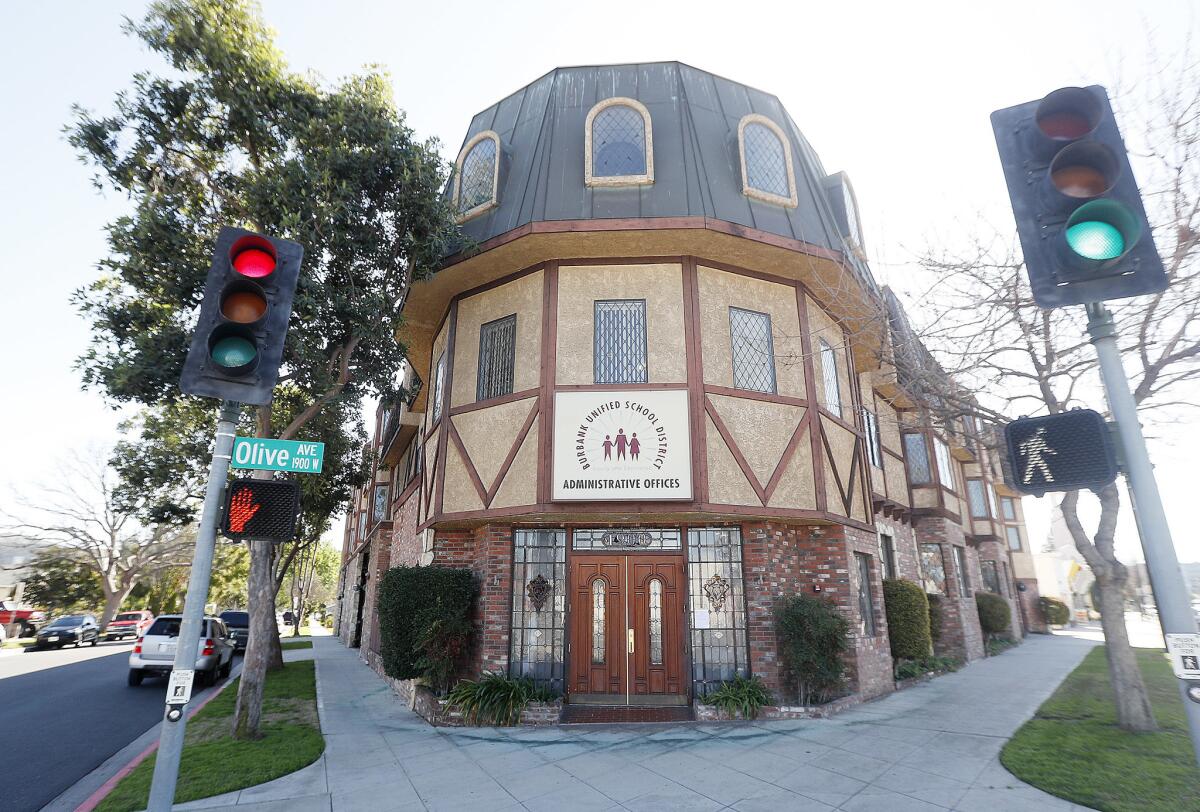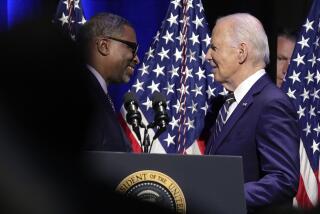Op-Ed: Joe Biden seems to think school segregation is nearly unsolvable. These efforts prove him wrong

Democratic primary candidates this summer made school desegregation a campaign flashpoint. It’s an issue Americans battled over, then mostly retreated from, nearly four decades ago, despite ample studies detailing how students of all backgrounds benefit from integrated campuses.
“We’re segregated now,” former Vice President Joe Biden told a reporter at an event in New Hampshire, before asking rhetorically whether California Sen. Kamala Harris — who made waves at the first Democratic debate with her own desegregation story — would want to order federally imposed busing all over again.
Forced integration, as Biden implies, is a non-starter. But that doesn’t mean the story ends there. School districts and states, quietly yet potently, have devised workable ways to integrate their classrooms. Their success is largely a product of inventive curricula and bold educators going out of their way to invite diverse children into their classrooms.
The city of Burbank, for example, shows remarkable progress: Its highly diverse population of students is spread fairly evenly among its public schools. In most districts nationwide, the isolation of Latino children has grown worse over the past generation, according to a new UC Berkeley study I led. But not in Burbank, where a Latino child is eight times more likely to sit beside a white classmate than his or her peers in the L.A. Unified School District.
To retain middle-class and white families in public schools, Burbank educators invest in art and music curricula and in career-pathway programs “which appeal to all parents,” in the words of Supt. Matt Hill. Two Burbank elementary schools immerse their students in two classroom languages, English and Spanish. Hill’s only problem: These dual language programs are so popular, the schools lack enough seats to admit all the white families who apply.
LAUSD’s overall ratio of white students to Latinos doesn’t come close to Burbank’s, but Los Angeles’ vast and diverse district can claim its integration success stories too. Palms Middle School, just west of Culver City, draws a student body that almost mirrors L.A.’s demographics: 40% Latino, 33% white and Asian, 25% black. Moreover, two-thirds of all its students clear the state’s proficiency bar in reading, slightly fewer in mathematics. This, despite the fact that more than half come from poor households.
Palms’ magnet and honors programs, serving nearly half of the student body, purposefully ratchet up the pace and complexity of learning. The gifted and talented magnet attracts students from across the city, many traveling “an hour each way,” often by bus, says the school’s magnet director, Arlene Weissmann.” Like all LAUSD magnet students, they are selected by a weighted lottery to ensure a rich ethnic mix.
Palms will unveil a second magnet next year, Modern Media and Communications, which will emphasize project-based learning to teach students how to craft stories on multiple platforms, including video production and digital animation. The appeal of such inventive magnet curricula pulls families into public schools who might otherwise bolt for charters. That, in turn, helps create the level of integration that helps kids “learn to accept each other,” Weissmann says.
LAUSD recently doubled its magnet offerings to nearly 300 programs. But for the new school year, slots were available for less than two-fifths of the 84,738 pupils whose parents applied. Next week, the Los Angeles School Board will vote on member Kelly Gonez’s effort to further desegregate magnet and other “schools of choice,” including strategies to combat the stratifying effects of charter schools.
Still, efforts within districts can only go so far. Urban areas like those served by L.A. Unified and Burbank Unified may simply host too few white and Asian students to blend with other minorities. Voluntary efforts in other states also integrate schools across district lines.
In Hartford, Conn., more than 19,000 students from multiple districts are attracted to shared magnet programs. In Massachusetts, the METCO program project (the name stands for the Metropolitan Council for Educational Opportunity Inc.) awards extra tax dollars to suburban Boston districts that invite 3,100 inner-city children into their schools each year. This regional effort arranges and pays for buses to move kids in and out of the city, and and even sets up urban-suburban play dates to foster cross-racial friendships.
I can attest to METCO’s human-scale benefits. When my family lived outside Boston, my son established a crucial friendship with James, who left downtown Boston before sunup each morning, did homework at our house and joined in neighborhood sleepovers. A 2019 Harvard study tracked the effects: Black and Latino “METCO kids” display stronger reading scores and graduate from high school at a 30% higher rate than matched peers who aren’t in the program.
Despite Biden’s weary despair about segregation, under a caring president greater federal support of magnet schools and greater fiscal carrots for cross-district integration could amplify these success stories.
In the meantime, California Gov. Gavin Newsom need not wait to make a difference. His first budget spotlighted increased access to early childhood education. Newsom can widen his attack on inequality by next earmarking funding to scale up the best practices of Burbank, LAUSD and other districts in the state that put the lie to “we’re segregated.”
Bruce Fuller is a professor of education and public policy at UC Berkeley.
More to Read
A cure for the common opinion
Get thought-provoking perspectives with our weekly newsletter.
You may occasionally receive promotional content from the Los Angeles Times.










